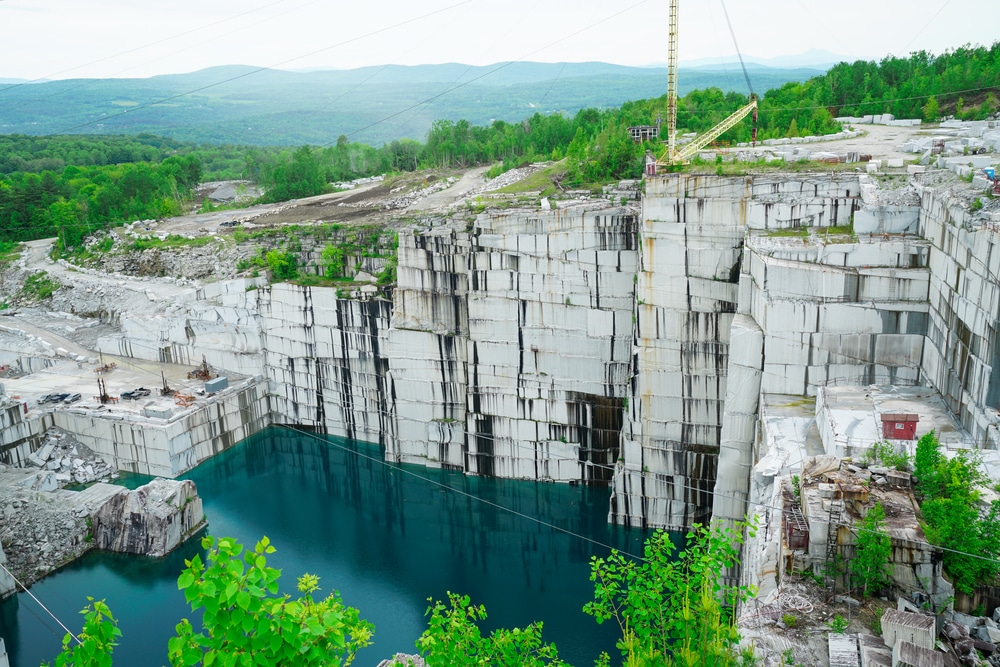Journeying Via Granite Quarries in South Africa: A Visual Odyssey
Journeying Via Granite Quarries in South Africa: A Visual Odyssey
Blog Article
Unveiling the Mysteries of Granite Quarrying: Where Toughness and Sophistication Meet
The globe of granite quarrying is a world where the raw toughness of nature converges with human artistry to create frameworks that stand the test of time with an air of beauty. From the depths of quarries to the thorough polishing in workshops, the process of transforming granite right into building marvels is an intricate dancing of custom and advancement. As we peer into the depths of this ancient craft, we start to discover the hidden ins and outs that form the very significance of our developed setting.
The Origins of Granite Quarrying
In the annals of architectural history, the origins of granite quarrying are shrouded in a tapestry of old craftsmanship and geological marvels. Going back to old Egypt and Mesopotamia, the removal of granite from quarries noted the start of a journey that would eventually cause the creation of some of the world's most famous structures.
Granite quarrying's origins can be mapped to the skilled craftsmens that recognized the stone's toughness and aesthetic allure. Via a combination of primitive devices and large determination, these very early quarry employees unearthed granite blocks that would come to be the foundation of people.
As human beings progressed, so did the strategies of quarrying granite. The Romans, renowned for their engineering prowess, established innovative methods for removing granite to create monuments, holy places, and roads that stood the test of time.
The legacy of these old quarrying techniques remains to form contemporary architecture, with granite staying an icon of toughness and elegance in building and construction projects around the world. (granite quarries in south africa)
Devices of the Quarrying Profession
The development of granite quarrying techniques from ancient people to modern times highlights the essential role played by the tools of the quarrying trade in shaping the sector's practices. In old times, quarrying devices were primary, usually containing blades, hammers, and wedges made from products like bronze or iron. These tools required substantial workforce and time to extract granite blocks from quarries.

Furthermore, the intro of pneumatically-driven devices and high-powered equipment has dramatically minimized the physical labor called for in quarrying operations, boosting employee safety and security sites and productivity. As the quarrying market continues to introduce, the tools of the trade remain at the forefront of driving development and shaping the future of granite removal.
Removing Blocks of Granite
Using precision equipment and advanced strategies, the extraction of granite blocks from quarries has actually you can find out more come to be an innovative procedure in the contemporary quarrying sector. The initial action includes identifying the place and dimension of the granite deposit to establish the most reliable extraction approach. As soon as a suitable website is selected, the extraction procedure begins with the exploration of openings for the placement of dynamites. Regulated blasting methods are then utilized to disintegrate the granite right into manageable areas.

Polishing and Ending Up Strategies
To attain a remarkable surface area on granite blocks, competent craftsmens use a series of meticulous sprucing up and completing methods. After the first extraction and forming processes, the granite blocks undertake a complete polishing phase to boost their all-natural charm and durability. One common approach utilized in brightening granite is diamond abrasion, where industrial rubies are utilized to grind and polish the rock to a smooth surface. This procedure not just develops a lustrous surface but also ensures uniformity in shade and appearance across the granite block.
In enhancement to sprucing up, finishing strategies are applied to their website further improve the granite's appearance. These strategies may include flaming, refining, or brushing, each offering one-of-a-kind textures and finishes to match various visual choices. Flaming, for circumstances, entails revealing the granite surface area to heats to produce a rough, distinctive coating, suitable for exterior applications where slip-resistance is crucial. Honing, on the other hand, supplies a matte surface that is smooth to the touch, perfect for indoor counter tops and flooring. By carefully picking and applying these polishing and ending up strategies, craftsmens can transform raw granite obstructs right into splendid items that display both stamina and elegance.

Environmental Effect and Sustainability
With the growing emphasis on environmental awareness in the sector, granite quarrying practices are significantly scrutinized for their influence on natural deposits and long-term sustainability. Quarrying for granite can have substantial ecological effects. The extraction process typically entails using hefty equipment, explosives, and big amounts of water, causing habitat destruction, soil disintegration, and water pollution. Additionally, the transportation of granite from quarries to processing facilities produces carbon discharges, even more adding to environmental degradation. granite quarries in south africa.
To alleviate these effects and ensure sustainability in granite quarrying, sector stakeholders are taking on various measures. Executing advanced technologies to decrease power usage and water use, redeeming quarried land for environmental remediation, and advertising responsible sourcing practices are some techniques being employed. Moreover, certifications such as the Forest Stewardship Council (FSC) and the Management in Energy and Environmental Style (LEED) assistance consumers recognize ecologically friendly granite items.
Conclusion
Finally, granite quarrying is a process that requires specialized devices and strategies to remove blocks of granite and polish them to a high level of surface. While the ecological influence of quarrying can be significant, initiatives are being made to boost sustainability methods in the sector. Overall, granite quarrying is a delicate balance in between taking advantage of the toughness and sophistication of this all-natural stone while reducing its influence on the setting.
Report this page